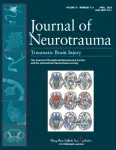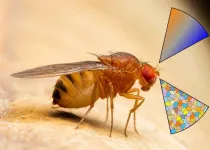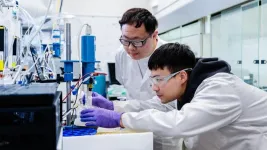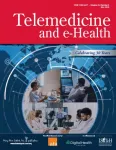(Press-News.org) Hemangiosarcoma is a common and aggressive type of cancer in dogs that arises from blood vessel cells and spreads very quickly, throughout the body, frequently affecting the spleen, liver, heart and muscles, among other organs.
“Because this type of cancer comes from blood vessels, it is common for these tumors to suddenly cause massive bleeding into the abdomen or chest,” says Heather Gardner, D.V.M., Ph.D., DACVIM (Oncology), GBS20. “Often when a dog is diagnosed, it is an emergency due to the blood loss associated with tumor rupture. They can have other problems related to hemangiosarcoma, such as lethargy, weakness, and shortness of breath. It's very frustrating for us clinically because it is so difficult to detect before it has spread.”
Hemangiosarcoma can appear in almost any breed although golden retrievers are known to be highly predisposed, and the tumors usually arise in many different organs. Gardner, an assistant professor at Cummings School of Veterinary Medicine at Tufts University, says that once the cancer is diagnosed, typically it has already spread elsewhere in the body at a microscopic level, such as within the abdomen or to the lungs. Patients often develop disease progression despite immediate and aggressive therapy that includes both surgery and chemotherapy.
Gardner is a veterinary oncologist who has investigated cancers, such as osteosarcoma and lymphoma, in dogs for several years. With hemangiosarcoma, most veterinarians rely on clinical changes or imaging to monitor the disease. But with her osteosarcoma research, Gardner is studying ways to use a new technique called liquid biopsy to identify tumor specific markers in a blood sample, as a way to detect and monitor cancer. Now, she’s applying that technique to hemangiosarcoma.
“Cells in the body, whether normal or cancerous, release tiny little snippets of DNA into the bloodstream,” explains Gardner. “Researchers know that the cancer cells have mutations in certain genes that you don’t see in normal cells. We are using this to try and identify whether DNA is being released into the bloodstream from cancer cells and to accurately detect the presence of small amounts of cancer in patients that may be at risk of the cancer or in patients receiving treatment before a clinical relapse.”
In addition to doing this research for the benefit of dogs, Gardner is also hoping that much of the knowledge learned can be applied to help improve liquid biopsy tests for people with a similar cancer called angiosarcoma. Because angiosarcoma is a rare cancer, with only 800 cases per year compared to over 50,000 cases per year of hemangiosarcoma in dogs, it is much harder to perform clinical trials. The dog studies can help to optimize and validate a liquid biopsy platform to reduce the likelihood of failure once it transitions to human studies.
This work is part of a larger project led by Cheryl London, D.V.M., Ph.D., DACVIM, associate dean for research and graduate education at Cummings School. London is a veterinary oncologist/immunologist and the principal investigator on an RC2:High Impact, Interdisciplinary Science grant, which is associated with a parent UM1 Clinical and Translational Science Award to Tufts from the National Institutes of Health. Gardner, as well as veterinary nutritionist Lisa Freeman, D.V.M., Ph.D., DACVIM, and veterinary cardiologist Vicky Yang, D.V.M., Ph.D., DACVIM, are co-investigators. Their goal is to leverage clinical trials in pet dogs to optimize early detection of both cancer and heart disease, and then translate these advances into human health.
Early Steps in Early Detection
At the Comparative Pathology and Genomics Shared Resource, Gardner and London are designing a panel of genes that they know are commonly altered and mutated in hemangiosarcoma. Their goal is to study plasma (blood) samples from dogs that have hemangiosarcoma and validate that the liquid biopsy approach can identify biomarkers or genes that are prognostic for patients. The second part of the project is to use those panels to determine which therapy is best for an individual dogs with hemangiosarcoma.
“The idea is that if a dog has a mutation in gene X, if we have a drug that treats a mutated gene X, then we should prioritize that therapy for that individual patient,” says Gardner. “Based on prior studies we recently completed, we believe a few treatment combinations are going to have activity in this disease, and we want to assign those treatments based on the genetic changes we're seeing in our liquid biopsy tests to help improve outcomes.”
Using the Clinical Research Shared Resource, Gardner and London plan to validate their custom canine panel for the liquid biopsy with existing biobanked plasma samples. Later this year, they’ll enroll dogs in a clinical trial to help them design a rapid digital test that they can use to help clinicians make treatment decisions for patients.
“This time around, we’re trying to answer very specific and challenging questions with the liquid biopsy technique. We have continuously been working to find ways to improve it in a translational way that not only benefits our patients, but hopefully can provide information to optimize approaches for a variety of cancers in people, as well,” Gardner says.
Hemangiosarcoma is a common and aggressive type of cancer in dogs that arises from blood vessel cells and spreads very quickly, throughout the body, frequently affecting the spleen, liver, heart and muscles, among other organs.
“Because this type of cancer comes from blood vessels, it is common for these tumors to suddenly cause massive bleeding into the abdomen or chest,” says Heather Gardner, D.V.M., Ph.D., DACVIM (Oncology), GBS20. “Often when a dog is diagnosed, it is an emergency due to the blood loss associated with tumor rupture. They can have other problems related to hemangiosarcoma, such as lethargy, weakness, and shortness of breath. It's very frustrating for us clinically because it is so difficult to detect before it has spread.”
Hemangiosarcoma can appear in almost any breed although golden retrievers are known to be highly predisposed, and the tumors usually arise in many different organs. Gardner, an assistant professor at Cummings School of Veterinary Medicine at Tufts University, says that once the cancer is diagnosed, typically it has already spread elsewhere in the body at a microscopic level, such as within the abdomen or to the lungs. Patients often develop disease progression despite immediate and aggressive therapy that includes both surgery and chemotherapy.
Gardner is a veterinary oncologist who has investigated cancers, such as osteosarcoma and lymphoma, in dogs for several years. With hemangiosarcoma, most veterinarians rely on clinical changes or imaging to monitor the disease. But with her osteosarcoma research, Gardner is studying ways to use a new technique called liquid biopsy to identify tumor specific markers in a blood sample, as a way to detect and monitor cancer. Now, she’s applying that technique to hemangiosarcoma.
“Cells in the body, whether normal or cancerous, release tiny little snippets of DNA into the bloodstream,” explains Gardner. “Researchers know that the cancer cells have mutations in certain genes that you don’t see in normal cells. We are using this to try and identify whether DNA is being released into the bloodstream from cancer cells and to accurately detect the presence of small amounts of cancer in patients that may be at risk of the cancer or in patients receiving treatment before a clinical relapse.”
In addition to doing this research for the benefit of dogs, Gardner is also hoping that much of the knowledge learned can be applied to help improve liquid biopsy tests for people with a similar cancer called angiosarcoma. Because angiosarcoma is a rare cancer, with only 800 cases per year compared to over 50,000 cases per year of hemangiosarcoma in dogs, it is much harder to perform clinical trials. The dog studies can help to optimize and validate a liquid biopsy platform to reduce the likelihood of failure once it transitions to human studies.
This work is part of a larger project led by Cheryl London, D.V.M., Ph.D., DACVIM, associate dean for research and graduate education at Cummings School. London is a veterinary oncologist/immunologist and the principal investigator on an RC2:High Impact, Interdisciplinary Science grant, which is associated with a parent UM1 Clinical and Translational Science Award to Tufts from the National Institutes of Health. Gardner, as well as veterinary nutritionist Lisa Freeman, D.V.M., Ph.D., DACVIM, and veterinary cardiologist Vicky Yang, D.V.M., Ph.D., DACVIM, are co-investigators. Their goal is to leverage clinical trials in pet dogs to optimize early detection of both cancer and heart disease, and then translate these advances into human health.
Early Steps in Early Detection
At the Comparative Pathology and Genomics Shared Resource, Gardner and London are designing a panel of genes that they know are commonly altered and mutated in hemangiosarcoma. Their goal is to study plasma (blood) samples from dogs that have hemangiosarcoma and validate that the liquid biopsy approach can identify biomarkers or genes that are prognostic for patients. The second part of the project is to use those panels to determine which therapy is best for an individual dogs with hemangiosarcoma.
“The idea is that if a dog has a mutation in gene X, if we have a drug that treats a mutated gene X, then we should prioritize that therapy for that individual patient,” says Gardner. “Based on prior studies we recently completed, we believe a few treatment combinations are going to have activity in this disease, and we want to assign those treatments based on the genetic changes we're seeing in our liquid biopsy tests to help improve outcomes.”
Using the Clinical Research Shared Resource, Gardner and London plan to validate their custom canine panel for the liquid biopsy with existing biobanked plasma samples. Later this year, they’ll enroll dogs in a clinical trial to help them design a rapid digital test that they can use to help clinicians make treatment decisions for patients.
“This time around, we’re trying to answer very specific and challenging questions with the liquid biopsy technique. We have continuously been working to find ways to improve it in a translational way that not only benefits our patients, but hopefully can provide information to optimize approaches for a variety of cancers in people, as well,” Gardner says.
END
A new way to fight an aggressive cancer in dogs
Bolstered by years of generative cancer work, researchers at Cummings School of Veterinary Medicine are taking aim at hemangiosarcoma
2024-05-22
ELSE PRESS RELEASES FROM THIS DATE:
Jaboticaba peel reduces inflammation and controls blood sugar in people with metabolic syndrome
2024-05-21
The skin or peel of the Jaboticaba berry (Plinia jaboticaba), a native of the Brazilian Atlantic Rainforest, is usually thrown away because of its astringency (due to an abundance of mouth-puckering tannins), yet it can be a powerful ally in the treatment of obesity and metabolic syndrome, according to an article published in the journal Nutrition Research.
Conducted by researchers at the State University of Campinas (UNICAMP) in São Paulo state (Brazil), the study showed that inflammation and blood sugar levels improved in volunteers with obesity and metabolic syndrome who took 15 g per day of powdered jaboticaba peel as a dietary supplement for five weeks.
“The ...
Acute pseudoaneurysms following head gunshot wounds
2024-05-21
New Rochelle, NY, May 21, 2024—A new study in the peer-reviewed Journal of Neurotrauma contends that a significant fraction of traumatic intracranial aneurysms (TICAs) is missed on initial contrasted scans of patients suffering a civilian gunshot wound to the head (cGSWH). The study was designed to characterize acute TICAs using admission CT angiography (aCTA). Click here to read the article now.
The study showed that the presence of an intracerebral hematoma was the main predictor of TICA in cGSWH. Larger intracerebral hematomas in patients with cGSWH suggest hidden TICAs.
“When CTA was performed acutely, TICAs were ...
Misinformation swirled during Taiwan's 2024 elections
2024-05-21
With more than 70 countries hosting national elections, 2024 is the biggest election year in history, according to The Economist.
But how misinformation impacts elections, especially with the rise in content generated by artificial intelligence, continues to be of concern.
A research team examined misinformation narratives on social media in 2023 regarding the Taiwanese presidential election on January 13, 2024. They were especially interested in how narratives targeted relations between Taiwan and the United States.
Misinformation targeted mistrust and skepticism toward the U.S. rather ...
New report highlights many unknowns in green hydrogen plans across California
2024-05-21
OAKLAND, CA – Officials throughout the state of California have developed plans to start deploying green hydrogen at scale in the coming decade in order to reach California’s 2045 climate neutrality targets. A new analysis, published by scientists at PSE Healthy Energy, finds that while certain applications of green hydrogen may present opportunities to lower greenhouse gas emissions, many challenges remain and misalignments between current proposals could undermine progress toward state climate goals.
“Many state and local agencies are counting on massive build outs of green hydrogen infrastructure in the coming decades to achieve their climate targets,” ...
Adding obesity experts to primary care clinics improves patients’ weight loss outcomes
2024-05-21
Giving high-risk patients access to an obesity specialist through their regular primary care clinic increased their chances of receiving at least one evidence-based weight-management treatment, and led to more weight lost in just a year, a new University of Michigan study finds.
Primary care clinicians commonly struggle to help patients develop an individualized weight-management treatment plan during short clinic visits. Previous U-M research showed that most primary care patients with obesity do not lose at least 5% of their body weight, a goal that’s been shown to reduce obesity-related ...
Detecting odors on the edge: Researchers decipher how insects smell more with less
2024-05-21
Whether it’s the wafting aroma of our favorite meal or the dangerous fumes seeping from a toxic chemical, the human sense of smell has evolved into a sophisticated system that processes scents through several intricate stages. The brains of mammals have billions of neurons at their disposal to recognize odors they are exposed to, from pleasant to pungent.
Insects such as fruit flies, on the other hand, have a mere 100,000 neurons to work with. Yet their survival is dependent upon their ability to decipher the meaning of complex odor mixtures around them to locate food, seek potential mates and avoid predators. Scientists have pondered how insects are able to smell, or extract ...
Recycling carbon dioxide into household chemicals
2024-05-21
A low-cost, tin-based catalyst can selectively convert carbon dioxide to three widely produced chemicals — ethanol, acetic acid and formic acid.
Lurking within the emissions from many industrial operations is an untapped resource — carbon dioxide (CO2). A contributor of greenhouse gas and global warming, it could instead be captured and converted to value-added chemicals.
In a collaborative project involving the U.S. Department of Energy’s (DOE) Argonne National Laboratory, Northern Illinois University and Valparaiso University, ...
Wayne State faculty member named president of the International Association for Great Lakes Research board
2024-05-21
DETROIT —
The International Association for Great Lakes Research today announced its new board of directors and has named Donna Kashian, Ph.D., professor of biological sciences and director of environmental sciences in the College of Liberal Arts and Sciences at Wayne State University, as president. Kashian previously served as vice president of the board.
Founded in 1967, the International Association for Great Lakes Research is a scientific organization made up of researchers studying the Laurentian Great Lakes, other large lakes of the world and their watersheds, as well as those ...
Consultative support to pediatric primary care providers in providing gender-affirming care
2024-05-21
New Rochelle, NY, May 21, 2024—A new study in the peer-reviewed journal Telemedicine and e-Health found that access to consultative support can increase pediatric primary care provider comfort providing gender-affirming care. Click here to read the article now.
The literature suggests that access to gender-affirming medical care is associated with improved medical outcomes among adolescents who identify as gender diverse or endorse a gender identity that differs from their sex assigned at birth. An increasing number of gender diverse youth seek guidance and support from their pediatric primary care providers (PPCPs), who often lack adequate training in this ...
Alaska’s rusting waters: Pristine rivers and streams turning orange
2024-05-21
Dozens of Alaska’s most remote streams and rivers are turning from a crystal clear blue into a cloudy orange, and the staining could be the result of minerals exposed by thawing permafrost, new research in the Nature journal Communications: Earth and Environment finds.
For the first time, a team of researchers from the National Park Service, U.S. Geological Survey, the University of California, Davis, and other institutions have documented and sampled some of the impaired waters, pinpointing ...
LAST 30 PRESS RELEASES:
New study overturns long-held model of how plants coordinate immune responses.
New AI model predicts disease risk while you sleep
Scientists discover molecular ‘reshuffle’ and crack an 80-year-old conundrum
How stressors during pregnancy impact the developing fetal brain
Electrons lag behind the nucleus
From fungi to brain cells: one scientist's winding path reveals how epigenomics shapes neural destiny
Schizophrenia and osteoporosis share 195 genetic loci, highlighting unexpected biological bridges between brain and bone
Schizophrenia-linked genetic variant renders key brain receptor completely unresponsive to both natural and therapeutic compounds
Innovative review reveals overlooked complexity in cellular energy sensor's dual roles in Alzheimer's disease
Autism research reframed: Why heterogeneity is the data, not the noise
Brazil's genetic treasure trove: supercentenarians reveal secrets of extreme human longevity
The (metabolic) cost of life
CFRI special issue call for papers: New Frontiers in Sustainable Finance
HKU Engineering scholar demonstrates the smallest all-printed infrared photodetectors to date
Precision empowerment for brain "eavesdropping": CAS team develops triple-electrode integrated functional electrode for simultaneous monitoring of neural signals and chemical transmitters during sleep
Single-capillary endothelial dysfunction resolved by optoacoustic mesoscopy
HKU three research projects named among ‘Top 10 Innovation & Technology News in Hong Kong 2025’ showcasing excellence in research and technology transfer
NLRSeek: A reannotation-based pipeline for mining missing NLR genes in sequenced genomes
A strand and whole genome duplication–aware collinear gene identification tool
Light storage in light cages: A revolutionary approach to on-chip quantum memories
Point spread function decoupling in computational fluorescence microscopy
BacPhase: Long-insert paired-end sequencing for bin marker construction and genome phasing
GmWOX1 regulates the mediolateral polarity of compound leaves in soybean
ChargeFabrica: An open-source simulation tool that aims to accelerate search for high performance perovskite solar cells
High levels of ADAR overexpression induce abundant and stochastic off-target RNA editing in rice protoplasts
On-demand upgraded recycling of polyethylene and construction of sustainable multifunctional materials based on the "LEGO" strategy
New "Stomata in-sight" system allows scientists to watch plants breathe in real-time
Anorexia nervosa may result in long-term skeletal muscle impairment
Narrative-based performance reviews deemed fairest by employees
New insights reveal how advanced oxidation can tackle emerging water pollutants
[Press-News.org] A new way to fight an aggressive cancer in dogsBolstered by years of generative cancer work, researchers at Cummings School of Veterinary Medicine are taking aim at hemangiosarcoma





